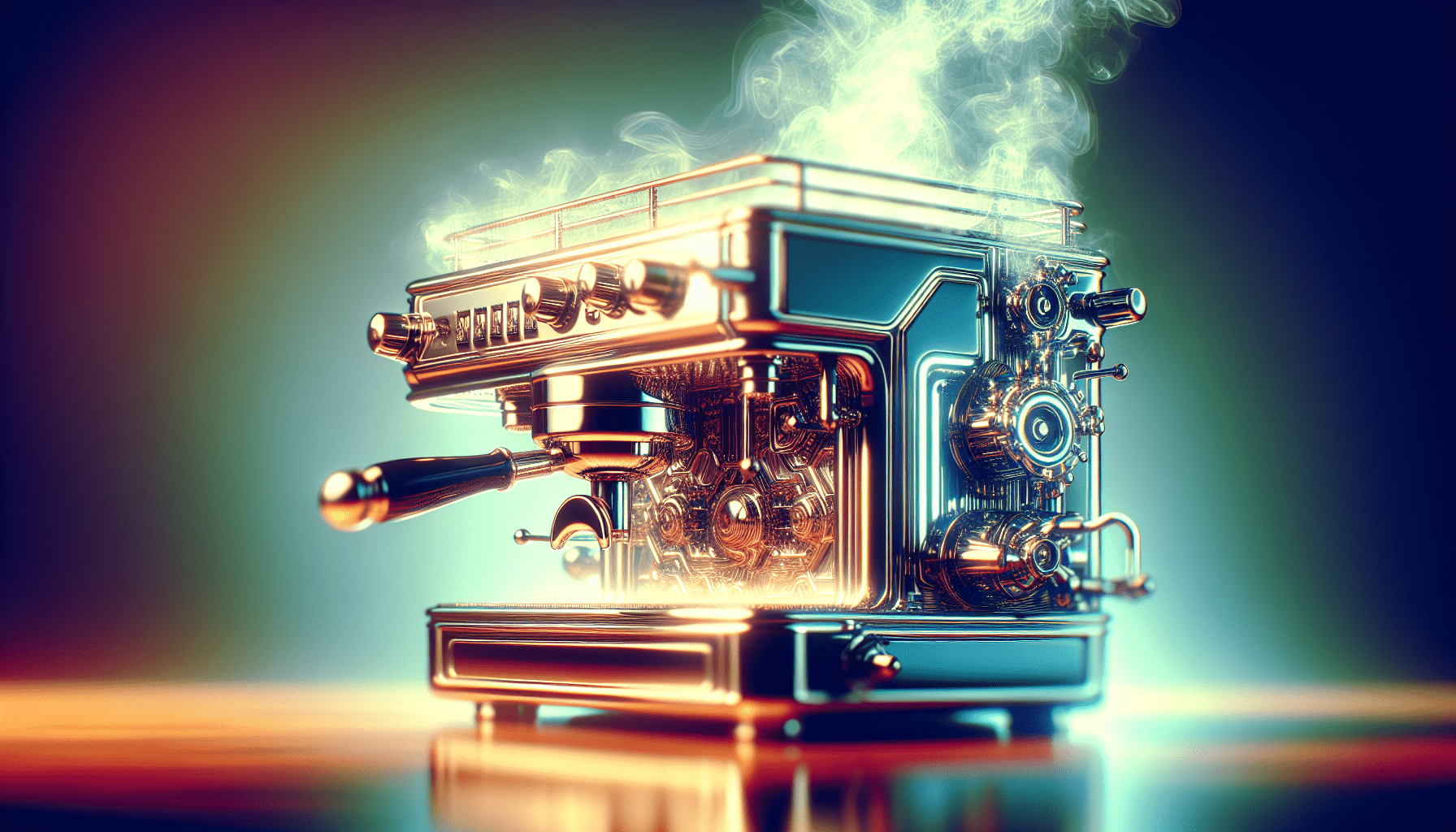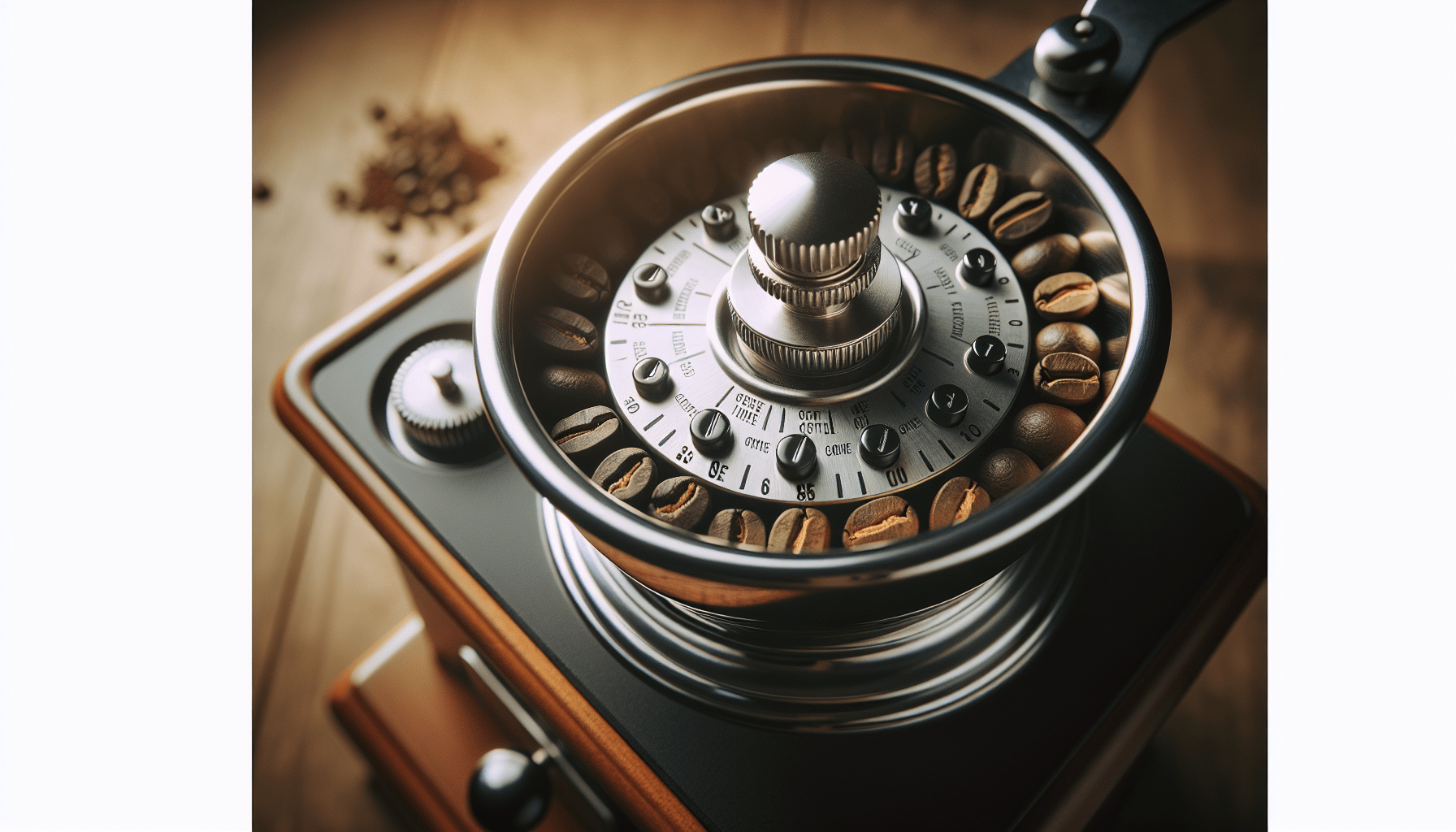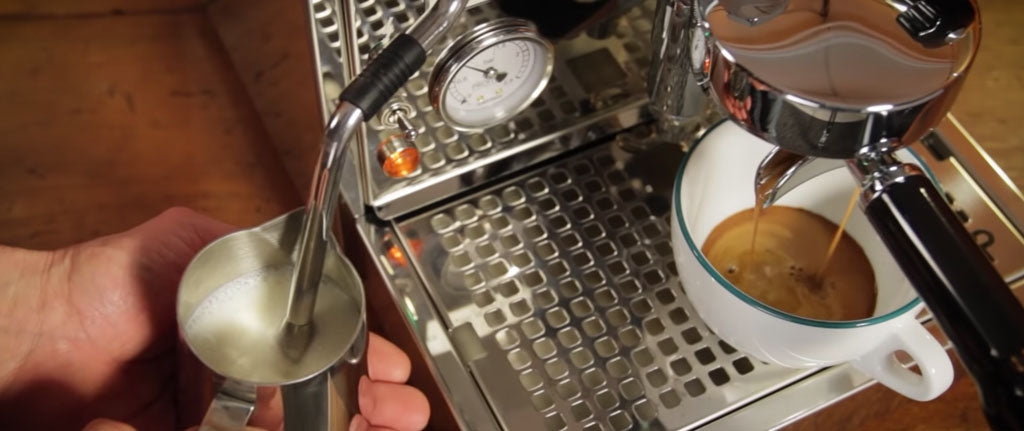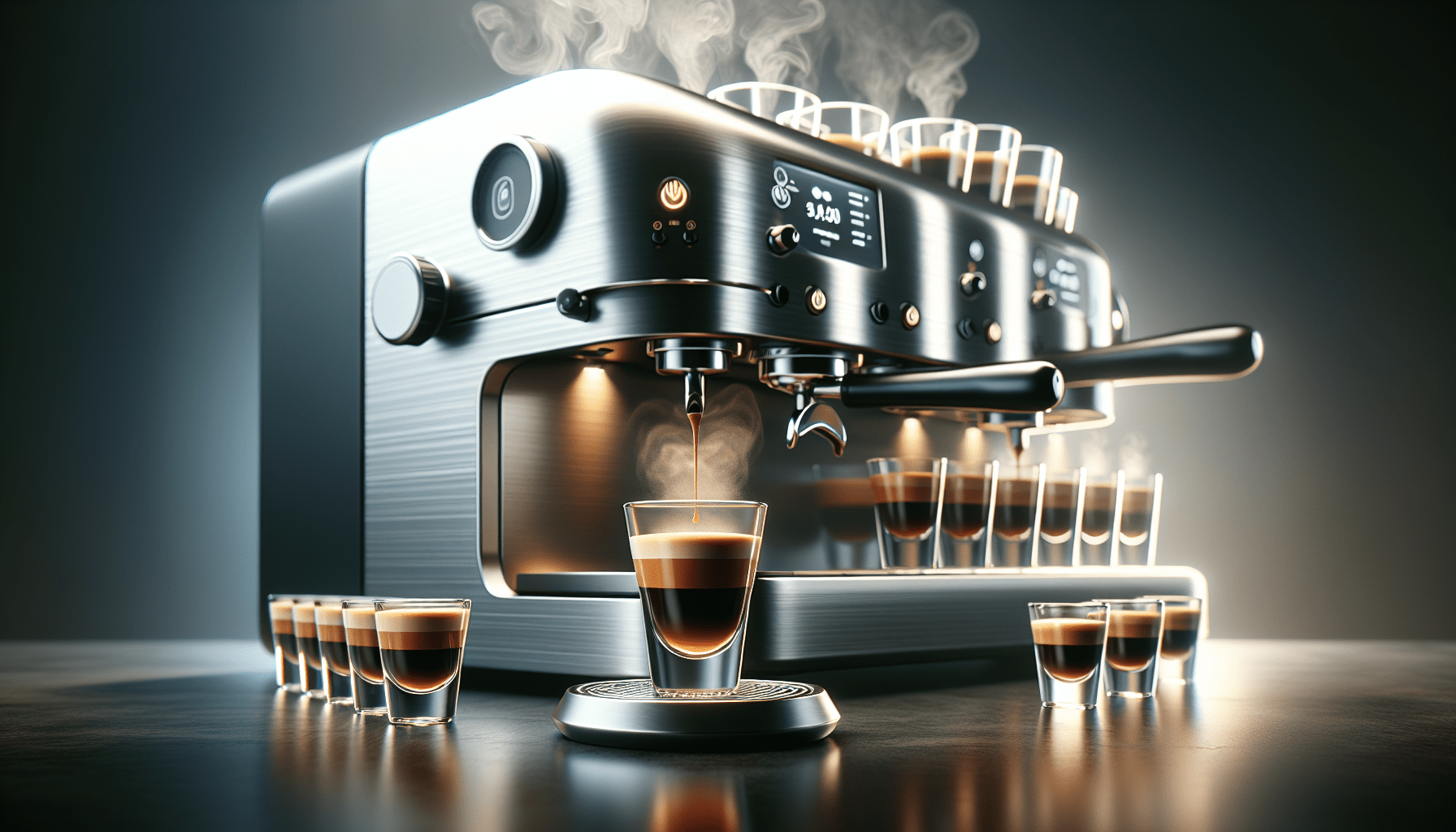Imagine waking up in the morning, craving a perfect shot of espresso to start your day. You stumble into the kitchen, grumpy and half-awake, and switch on your semi-automatic espresso machine. As you wait, eagerly anticipating that first sip of velvety goodness, you can’t help but wonder – how long does it actually take for your trusty machine to reach the optimal brewing temperature? In this article, we will explore the ideal timeframe for your semi-automatic espresso machine to reach that perfect temperature, ensuring that every morning starts off with a delightful brew.
Factors Affecting Time to Reach Brewing Temperature
When it comes to making a delicious cup of espresso, one of the most crucial factors is the brewing temperature. Achieving the optimal temperature allows for the perfect extraction of flavors from the coffee grounds, resulting in a rich and flavorful drink. However, the time it takes for a semi-automatic espresso machine to reach brewing temperature can vary depending on several factors. In this article, we will explore these factors and provide tips to reduce warm-up time, ensuring you have the best possible brewing experience.
Machine Design and Technology
The design and technology of the espresso machine play a significant role in how quickly it reaches brewing temperature. There are several aspects of machine design that can affect the warm-up time.
Boiler Size and Configuration
The size and configuration of the boiler can impact the time it takes to reach brewing temperature. A larger boiler will generally take longer to heat up, as it needs to heat a larger volume of water. On the other hand, a smaller boiler will heat up more quickly but may have limitations in terms of simultaneous use or steam production. Additionally, the configuration of the boiler, such as single or dual boilers, can also affect warm-up time.
Thermal Insulation
The level of thermal insulation in an espresso machine can greatly influence warm-up time. Machines with better insulation can retain heat more effectively, reducing the time it takes to reach the desired temperature. High-quality insulation not only helps to conserve energy but also ensures a more consistent temperature throughout the brewing process, resulting in better flavor extraction.
Heat Exchanger Systems
Some espresso machines utilize heat exchanger systems, which allow for simultaneous brewing and steaming. These systems work by utilizing a single boiler to generate steam and heat the water for brewing. While heat exchanger machines offer convenience, they may take longer to reach brewing temperature compared to machines with dedicated brew boilers.
Power and Heating Elements
The power and heating elements of an espresso machine are critical factors in determining how quickly it can reach brewing temperature.
Wattage and Voltage
The wattage of an espresso machine refers to its power rating, which affects how quickly it can heat the water. Machines with higher wattage ratings typically heat up more rapidly than those with lower ratings. Additionally, the voltage at which the machine operates can impact warm-up time, as higher voltages generally result in faster heating.
Type of Heating Element
The type of heating element used in an espresso machine can also influence warm-up time. Two common types of heating elements are electric heating elements and boilers with heating coils. Electric heating elements tend to heat up quickly and provide precise temperature control, while boilers with heating coils may take slightly longer to reach brewing temperature.
Controls and Temperature Stability
The controls and temperature stability of an espresso machine can affect how quickly it reaches brewing temperature and how consistent that temperature remains. Machines with advanced temperature control systems and stable temperature stability will generally heat up faster and provide more consistent brew temperatures, resulting in better espresso quality.
Initial Warm-Up Time
The initial warm-up time refers to the time it takes for an espresso machine to heat up from a cold start to the desired brewing temperature. Several factors can influence the length of the initial warm-up time.
Cold Startup
If you have not used your espresso machine for a while, it will likely require a longer warm-up time from a cold start. The machine needs to heat the internal components and the water in the boiler, which can take some time. It is important to keep this in mind and allow for an adequate warm-up period before beginning to brew your espresso.
Standby Mode
Some espresso machines have a standby mode, which keeps certain components or the entire machine at a lower temperature when not in use. While this feature can save energy, it may also increase warm-up time. If your machine has a standby mode, consider the warm-up time required to reach brewing temperature when transitioning from standby to active mode.
Preheating Rituals
Many espresso enthusiasts have their preheating rituals to ensure optimal performance and temperature stability. These rituals may involve running hot water through the group head, flushing the steam wand, or even pre-warming the portafilter. While these steps can contribute to the overall brewing experience, they can also add some additional time to the warm-up process.
Ambient Temperature
The ambient temperature of your environment can impact the warm-up time of your espresso machine.
Environmental Conditions
If you live in a particularly cold climate or have a drafty kitchen, it may take longer for your machine to reach brewing temperature. The colder the surrounding environment, the more time it will take for the machine to generate enough heat to reach the desired temperature.
Humidity
Humidity levels can also affect the warm-up time of an espresso machine. High humidity can cause moisture to accumulate on the machine’s internal components, potentially making it harder for the machine to reach the desired brewing temperature.
Seasonal Variation
Seasonal changes can also impact the warm-up time of your espresso machine. In colder months, it may take longer for the machine to heat up due to colder ambient temperatures. Conversely, in warmer months, the machine may reach brewing temperature more quickly.
How Long Does It Generally Take?
The time it takes for a semi-automatic espresso machine to reach brewing temperature can vary significantly depending on the factors mentioned above. On average, it can take anywhere from 15 to 30 minutes for a typical espresso machine to heat up. However, some machines with specific design features or heating elements may heat up faster or slower than this range.
Ultimately, the warm-up time will depend on the specific model and the conditions mentioned earlier. It is essential to consult the manufacturer’s instructions for your machine for accurate warm-up time guidelines.
Tips to Reduce Warm-Up Time
If you find that the warm-up time of your espresso machine is longer than desired, there are several tips you can follow to help reduce it.
Choose a Machine with Efficient Heating Elements
When purchasing an espresso machine, consider opting for a model with efficient heating elements. Higher wattage machines, as well as those with electric heating elements, tend to heat up more quickly. This will help reduce warm-up time and allow you to enjoy your espresso sooner.
Optimize Initial Warm-Up
To optimize the initial warm-up time, it is important to plan ahead. If you know you will be using the machine in the morning, leave it turned on overnight in standby mode. This will allow it to maintain a higher temperature and reduce warm-up time in the morning. Additionally, consider preheating the machine’s components by running hot water through the group head or flushing the steam wand before brewing.
Keep Your Machine Well-Maintained
Regular maintenance and cleaning are essential for ensuring optimal performance and reducing warm-up time. Scale buildup or other maintenance issues can hinder the machine’s ability to heat up efficiently. Regular descaling, backflushing, and general upkeep are necessary steps to keep your espresso machine running smoothly.
Importance of Brewing Temperature
Achieving the optimal brewing temperature is crucial for extracting the full flavor potential from your coffee beans and ensuring consistency in every cup.
Flavor Extraction
Different flavors and compounds in coffee are extracted at different temperatures. Brewing at an incorrect temperature can lead to under-extraction or over-extraction, resulting in a dull or bitter-tasting cup of espresso. By reaching and maintaining the proper brewing temperature, you can unlock the full range of flavors and enjoy a well-balanced and delicious espresso.
Consistency
Consistency is key in the world of coffee. By consistently reaching the desired brewing temperature, you can replicate your favorite cup of espresso time and time again. This is especially important for coffee professionals or enthusiasts who strive for precision and repeatability in their brewing methods.
Espresso Quality
The brewing temperature plays a significant role in the overall quality of your espresso. A well-heated machine ensures optimal extraction and flavor development, resulting in a rich crema, balanced taste, and pleasant aroma. Consistently achieving the correct brewing temperature will help you produce high-quality espresso shots every time.
Conclusion
The time it takes for a semi-automatic espresso machine to reach brewing temperature can vary depending on factors such as machine design, power, initial warm-up time, and ambient temperature. Understanding these factors and implementing tips to reduce warm-up time can significantly improve your brewing experience. Remember, achieving the optimal brewing temperature is key to extracting the full flavor potential of your coffee and ensuring a consistently delicious cup of espresso. So, take the time to choose the right machine, optimize warm-up routines, and keep your espresso machine well-maintained for the best coffee experience possible.




